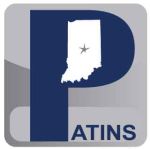Accessible Educational Materials (AEM) Resources & Tools
Resources & Tools
ICAM Basics Fact Sheet - A two-page handout created by the ICAM team.The ICAM team has created a guide to provide clarification of the AEM process for the Case Conference Committee and is intended for use during the IEP meeting.
The AEM Navigator (Print Version)
Check out the AEM - Simply Said Video for a brief overview of AEM in easy to understand language.
Audio-Supported Reading (ASR) is a technology-based approach for accessing and working with text presented in either braille or enlarged (magnified) print. This approach allows a user to listen to a spoken version of text while looking at screen-displayed print or touching braille. In ASR, both the rate of information pick up and the portion of attention paid to braille or print—in combination with speech—can be controlled by the user. With sufficient practice, both braille readers and magnified print readers can greatly increase the rate at which they move through text using ASR. In this video, Dr. Richard Jackson, a professor at Boston College and a Senior Research Scientist at CAST, describes his early struggles with text reading as a consequence of his severe low vision and reveals how he uses technology to blend both reading and listening to dramatically increase his efficiency.
Captioning Resource This document provides a variety of options for creating, curating, or adding captions to your content. You can add a comment or suggestion about a captioning resource you'd like to see added to the resource.
School District Policy for Providing Captions/Transcripts for AEM is a document that school personnel can reference regarding the need for providing captions and/or transcripts for any media with auditory information that is curated, purchased, and/or used by the district.
CAST has created an Accessibility Standards, Specifications & Guidelines resource. This page provides links to resources pertaining to accessibility standards, specifications, and guidelines that may prove useful to publishers, developers, educators, and others who create content to support the education of children and adults.
Please note: Not all Open Educational Resources (OER) are accessible and "digital" does not necessarily mean accessible. Always check for accessibility and/or recreate to make accessible. It is best practice for accessibility to have closed captions turned on for all videos.

